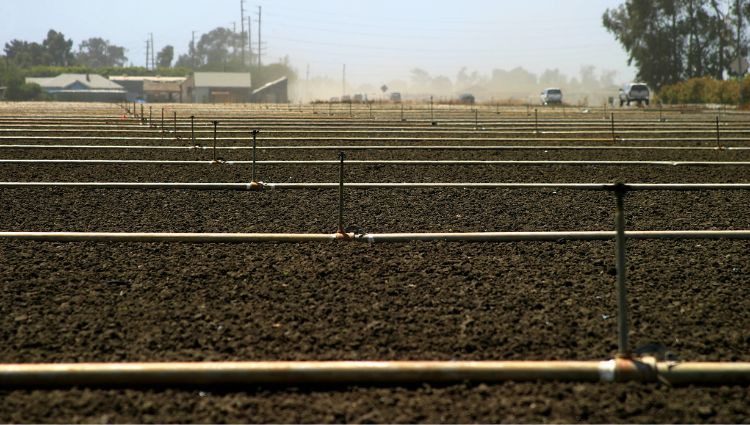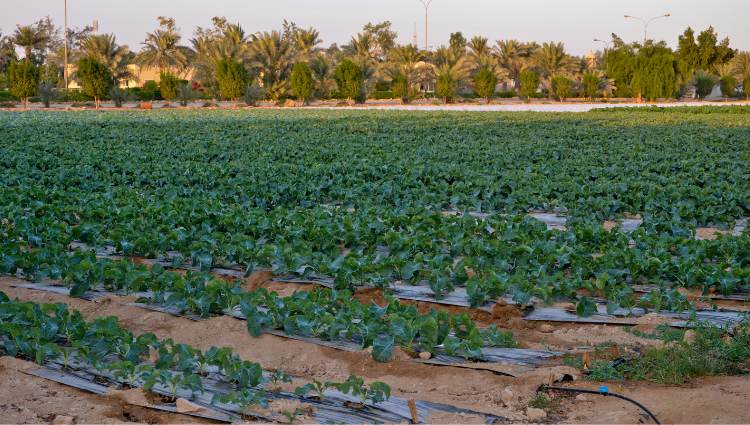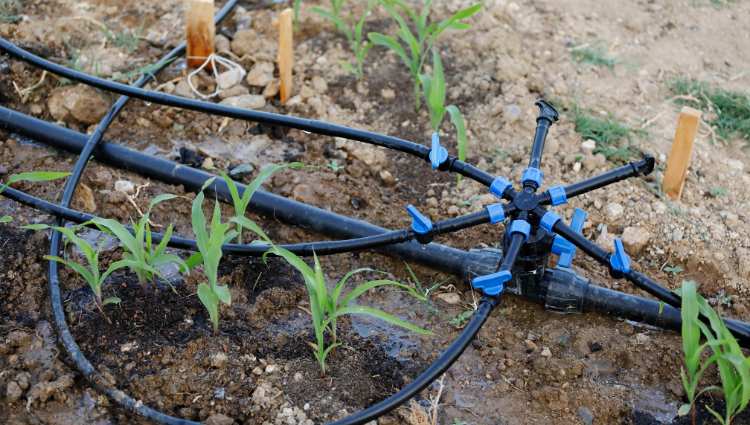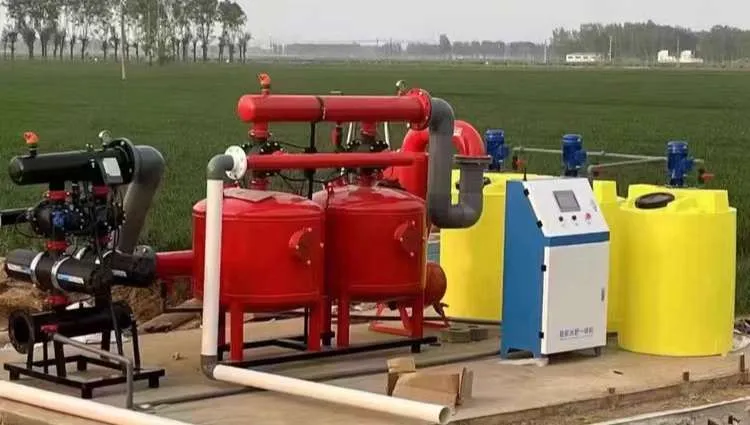မာတိကာ
In pipeline systems, we often encounter parameters such as flow rate, flow velocity, and pipe diameter. These data are very important; they are interconnected and play a key role in evaluating the stability and performance of the entire pipeline system.
Whether in municipal engineering, စက်မှုလုပ်ငန်း, or irrigation, pipeline systems are widely used. These pipelines are usually used to transport water. When selecting pipes or during the construction of pipeline systems, engineers need to understand parameters such as flow rate, flow velocity, and pipe diameter, so that the most suitable pipes can be matched for the project.
The author believes that understanding the relationship between flow rate, flow velocity, and pipe diameter is very important. ထိုကေြာင့်, this article will provide a detailed explanation from four aspects: the meanings of the three parameters, their calculation formulas, the relationships among them, and a comparison table.
The Meanings of Flow Rate, Flow Velocity, and Pipe Diameter
In a pipeline system, flow rate refers to the volume of water passing through the pipe cross-section within a certain period of time, and it can be represented by “Q.” Its common units include cubic meters per second (m³/s), cubic meters per hour (m³ / ဇ), liters per second (L/s), liters per hour (ဌ / h), နောက် ... ပြီးတော့.
In a pipeline system, flow velocity refers to the speed at which water flows inside the pipe, and it can be represented by “V.” Its common unit is meters per second (m/s).
In a pipeline system, pipe diameter refers to the inner diameter of the pipe, and it can be represented by “D.” Its common units include millimeters (မီစေမယ်) and meters (မီတာ).
Calculation Formulas of Flow Rate, Flow Velocity, and Pipe Diameter
There is a relationship between flow rate, flow velocity, and pipe diameter. They can be calculated using three sets of formulas. နောက်တစ်ခု, please follow my reasoning closely as we derive these three formulas step by step.
ပဌမ, let us clarify the related letter symbols. The calculation process will be expressed using these symbols. The symbols are as follows:
- Flow rate: Q
- Flow velocity: V
- Pipe diameter: ှုှမည်သောဆေး
- Pipe cross-sectional area: ပေ
Then, it should be noted that because the vast majority of pipes are circular, the following derivation mainly applies to circular pipes. Our derivation direction is: to derive the calculation formula for flow rate based on known flow velocity and pipe diameter.
Step 1: Calculate the pipe cross-sectional area
The pipe cross-sectional area is essentially the area of a circle, and the pipe diameter is the diameter of that circle. ထိုကေြာင့်, knowing D, the area of the circle is easy to calculate. The formula is: S=πD²/4
Step 2: Calculate the flow rate in the pipe
From Step 1, we already know the pipe’s cross-sectional area, and we also know the flow velocity. ထိုကေြာင့်, the flow rate is easy to calculate. The formula is: Q=SV, or Q=VπD²/4
နောက်ဆုံး, using the flow rate formula derived in Step 2, we can also derive the calculation formulas for flow velocity and pipe diameter. These three formulas are shown below.
Q = π D² V / 4
V = 4Q / π D²
D = √(4Q / π V)
ဟုတ်ပါတယ်, they can also be expressed using more professional mathematical formulas:

The Relationship Between Flow Rate, Flow Velocity, and Pipe Diameter
Through the three formulas we derived above, we can clearly see the mutual relationship between flow rate, flow velocity, and pipe diameter. The summary is as follows:
1.When the flow velocity is constant, the flow rate is proportional to the square of the pipe diameter.
2.When the pipe diameter is constant, the flow velocity is proportional to the flow rate.
3.When the flow rate is constant, the flow velocity is proportional to the square of the pipe diameter.
Reference Comparison Table
အထက်ပါကနေ, we have already known the calculation formulas between flow rate, flow velocity, and pipe diameter. We should be able to skillfully use these formulas to calculate the values we want. မည်မှျပင်, it is undeniable that the calculation process is relatively complex, and when the units of the three parameters are not consistent, we also need to perform unit conversions.
ထိုကေြာင့်, to improve efficiency, I provide you with a reference comparison table. This table lists the most commonly used parameters related to flow velocity, စီးဆင်းမှုနှုန်း, and pipe diameter in pipeline systems for your reference.
Please note that in this table, the unit for pipe diameter is “mm”, the unit for flow rate is “m³ / ဇ” and the unit for flow velocity is “m/s". (In the table, the parameters for flow velocity and pipe diameter include units, while the flow rate does not. This is to help ensure you do not confuse them.)
| Flow Rate, Flow Velocity, Pipe Diameter Comparison Table | ||||||||||||||
| အချင်း(မီစေမယ်) | Flow Velocity(m/s) | |||||||||||||
| 0.4m/s | 0.6m/s | 0.8m/s | 1m/s | 1.2m/s | 1.4m/s | 1.6m/s | 1.8m/s | 2m/s | 2.2m/s | 2.4m/s | 2.6m/s | 2.8m/s | 3m/s | |
| 20မီစေမယ် | 0.5 | 0.7 | 0.9 | 1.1 | 1.4 | 1.6 | 1.8 | 2 | 2.3 | 2.5 | 2.7 | 2.9 | 3.2 | 3.4 |
| 25မီစေမယ် | 0.7 | 1.1 | 1.4 | 1.8 | 2.1 | 2.5 | 2.8 | 3.2 | 3.5 | 3.9 | 4.2 | 4.6 | 4.9 | 5.3 |
| 32မီစေမယ် | 1.2 | 1.7 | 2.3 | 2.9 | 3.5 | 4.1 | 4.6 | 5.2 | 5.8 | 6.4 | 6.9 | 7.5 | 8.1 | 8.7 |
| 40မီစေမယ် | 1.8 | 2.7 | 3.6 | 4.5 | 5.4 | 6.3 | 7.2 | 8.1 | 9 | 10 | 10.9 | 11.8 | 12.7 | 13.6 |
| 50မီစေမယ် | 2.8 | 4.2 | 5.7 | 7.1 | 8.5 | 9.9 | 11.3 | 12.7 | 14.1 | 15.6 | 17 | 18.4 | 19.8 | 21.2 |
| 65မီစေမယ် | 4.8 | 7.2 | 9.6 | 11.9 | 14.3 | 16.7 | 19.1 | 21.5 | 23.9 | 26.3 | 28.7 | 31.1 | 33.4 | 35.8 |
| 80မီစေမယ် | 7.2 | 10.9 | 14.5 | 18.1 | 21.7 | 25.3 | 29 | 32.6 | 36.2 | 39.8 | 43.4 | 47 | 50.7 | 54.3 |
| 100မီစေမယ် | 11.3 | 17 | 22.6 | 28.3 | 33.9 | 39.6 | 45.2 | 50.9 | 56.5 | 62.2 | 67.9 | 73.5 | 79.2 | 84.8 |
| 125မီစေမယ် | 17.7 | 26.5 | 35.3 | 44.2 | 53 | 61.9 | 70.7 | 79.5 | 88.4 | 97.2 | 106 | 114.9 | 123.7 | 132.5 |
| 150မီစေမယ် | 25.4 | 38.2 | 50.9 | 63.6 | 76.3 | 89.1 | 101.8 | 114.5 | 127.2 | 140 | 152.7 | 165.4 | 178.1 | 190.9 |
| 200မီစေမယ် | 45.2 | 67.9 | 90.5 | 113.1 | 135.7 | 158.3 | 181 | 203.6 | 226.2 | 248.8 | 271.4 | 294.1 | 316.7 | 339.3 |
| 250မီစေမယ် | 70.7 | 106 | 141.4 | 176.7 | 212.1 | 247.4 | 282.7 | 318.1 | 353.4 | 388.8 | 424.1 | 459.5 | 494.8 | 530.1 |
| 300မီစေမယ် | 101.8 | 152.7 | 203.6 | 254.5 | 305.4 | 356.3 | 407.1 | 458 | 508.9 | 559.8 | 610.7 | 661.6 | 712.5 | 763.4 |
| 350မီစေမယ် | 138.5 | 207.8 | 277.1 | 346.4 | 415.6 | 484.9 | 554.2 | 623.4 | 692.7 | 762 | 831.3 | 900.5 | 969.8 | 1039.1 |
| 400မီစေမယ် | 181 | 271.4 | 361.9 | 452.4 | 542.9 | 633.3 | 723.8 | 814.3 | 904.8 | 995.3 | 1085.7 | 1176.2 | 1266.7 | 1357.2 |
| 450မီစေမယ် | 229 | 343.5 | 458 | 572.6 | 687.1 | 801.6 | 916.1 | 1030.6 | 1145.1 | 1259.6 | 1374.1 | 1488.6 | 1603.2 | 1717.7 |
ကောက်ချက်
Through this post, you should now clearly understand the relationship and calculation formulas among flow rate, flow velocity, and pipe diameter. I hope the content of this article is helpful to you.
နောက်ဆုံး, ငါတို့ကုမ္ပဏီကိုမိတ်ဆက်ပေးချင်ပါတယ်. Rainfaun သည်ဆည်မြောင်းထုတ်ကုန်ထုတ်လုပ်သူထုတ်လုပ်သူတရုတ်နိုင်ငံတွင်ရုံးချုပ်. ထုတ်ကုန်များကိုထုတ်လုပ်ရန်နှင့်တင်ပို့သည် drip irrigation supplies, sprinkler supplies, ပိုက်, and pipe fittings. သင်သတင်းအချက်အလက်ကိုရှာနိုင်သည် Rainfaun အကြောင်း နှင့် ကျွန်ုပ်တို့၏ထုတ်ကုန်များ ဒီဝက်ဘ်ဆိုက်မှာ.
If you want to contact us, သင်လုပ်နိုင်သည် ဤနေရာကိုကလစ်နှိပ်ပါ.
စာရေးသူ: မိုက်ကယ်
အယ်ဒီတာ: မိုက်ကယ်
အကြောင်းအရာပြန်လည်သုံးသပ်: မိုက်ကယ်







